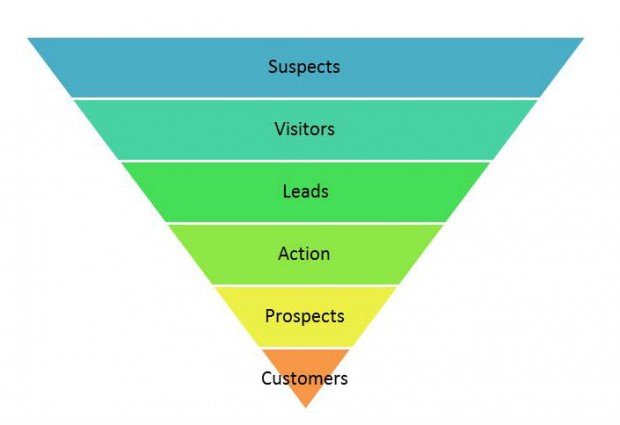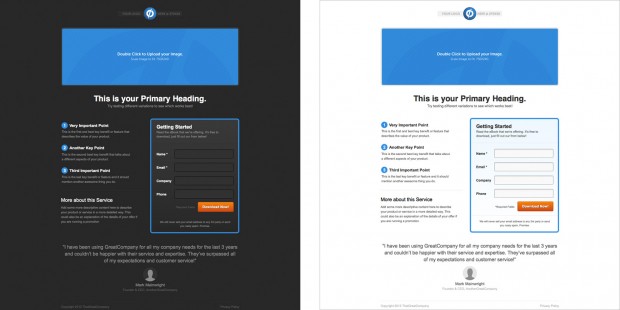Candidate sourcing is fast becoming a high-contact sport, with front-line recruiters developing new techniques and evolving old ones as the war for talent becomes more fierce. Filling the pipeline with high quality talent is today’s priority for Fortune 50 companies, staffing firms, and mid-size businesses.
Fortunately for recruiters, we needn’t look far for some best practices for online lead generation to help make a significant impact to our talent pipelines. For the past decade, online marketing professionals have been busy developing a practice known as Demand Generation, which, in layman’s terms, is the art of generating leads for a product or service through the web.

Demand Generation encompasses the entire cycle of lead generation, beginning with how and where to drive traffic to your website, strategies to convert the traffic into leads, “drip marketing” or email nurturing (to keep the leads warm until they are ready to buy), managing the leads in a CRM (customer relationship management) system a la Salesforce.com, and finally, closing the leads into “won” accounts. There are countless blogs, industry trade events, software solutions, and agencies dedicated to the field of Demand Generation. At big software companies you’ll even find Directors of Demand Generation whose sole responsibility is to work with sales and marketing to improve the quality and quantity of lead flow.
These techniques, when readily applied to your candidate sourcing strategies, can yield positive results, and don’t require a large financial investment to gain even a small amount of traction.
Defining Segments will be the first area of focus as you being the path towards integrating formal Demand Generation style tactics into your candidate sourcing efforts.
Defining Segments
Segments are the categories of prospects you wish to target. For our purposes we’ll define segments as job seeker types, for example, software engineers, or sales professionals. Marketing professionals for software companies might define the different target users of their solutions by demographic data, such as income, gender, or location. You may want to consider this level of detail as well, if you are ramping up hiring of software engineers in Seattle, for example.
Online marketers often segment their leads by position in the lead generation lifecycle, which can range from website visitor, to prospect, to customer. Your marketing strategy using these methods should be focused on one stage and one prospect type: the passive job seeker, which seems only natural, as you are attempting to capture their interest as “leads” and hopefully convert them into real candidates over time. Candidates who are actively approaching you about career opportunities likely won’t require this level of treatment, as they’ve already moved into the “interest” phase of the marketing lifecycle.
The goal of defining your segments is to focus on capturing the attention of the types of candidates you are looking to hire in a specific field/location, and creating compelling content and resources to attract their interest in your organization, and later on converting that interest into real action on their part (applying for jobs).
Once you segment your prospects, you can begin building compelling content to promote to them.
Creating the Content
Demand generation content is any piece of information easily consumed by a prospect. It can take many forms, the most popular of which are videos, whitepapers, blog posts, infographics, and data graphs, and can be prepared in-house or through freelancers/agencies who specialize in content creation.
To start developing content ideas for your campaigns, focus first on the customer segments you plan to market to. Again, if you are looking to hire software engineers for your development office in Seattle, you know that you need to create compelling content targeted to software engineers. They are not interested in reading your job descriptions just yet, but they’d probably love to read about your dev team’s approach to NoSQL. Many technology companies have their software engineering teams running their own tech-focused blogs, and this is perfect demand generation content for future candidates. Hook them with the great breakthroughs your team is working on, then dangle the carrot of a job opportunity.
One example of a good department-specific blog effort is Optify, a marketing automation software company, who launched a Tech Blog in 2011 (which appears to be stagnant but is still attracting traffic via SEO).
Department-specific content is great. How about a video that demonstrates your company culture and how happy your employees are to work there? Facebook has one, as do many other companies. You can make these generic and broad to reach all of your segments, or focus them on specific segment types.
Whitepapers are effective, especially when looking to recruit candidates who love data. Talk to manages in different departments to find out what they are working on that is bleeding edge in their field. It may not sound great to you, but if they are excited about it, chances are prospective candidates in that same field will be, too. Take their information and build a whitepaper that describes the opportunity/challenge and solutions that department developed to tackle the problem.
Brainstorm all the content ideas you can think of, and add these ideas to a calendar, over time, which will serve as your content schedule. The content schedule will inform all of your marketing activities, as you’ll know what content is coming available when, and who to market it to. Don’t expect to be able to create all of the content yourself – leverage professionals in your organization to lend a hand it building your content library whenever possible, and find some good third-party resources as well.
Once you have a good content library, you can start building Landing Pages which will serve as the doorway to this content through which prospects must pass.
Building Landing Pages
Now that you have your prospect segments defined, and have started building content for them, you can create the pass-through to this content where you will collect your lead information before or while revealing the content: the Landing Page.
Landing pages are used by both B2B and B2C marketers, and are designed to promote a specific feature or value proposition clearly, and CONVERT the visitors to the page, quickly.There are some great solutions on the market, such as Unbounce, that require zero coding ability and even make it fun to build dedicated landing pages, both web and mobile friendly.

Unbounce Landing Page template
Before you start building your landing pages, you must decide exactly what ACTION you intend for your prospects to take. If you are attempting to fill the pipeline with passive candidates, don’t ask for a resume just yet – an email address, name, and maybe an optional LinkedIn profile URL would be enough.
Clearly address what you are offering your prospect in exchange for their contact information. Remember, your goal here is not to convince a prospect to apply for a job, yet. You are creating a targeted list of prospective talent that you can market too, so give them every reason for them to want to give you their information. Use a colored button with bold print to grab the attention of your prospect and get them to convert.
Let’s say you are building a landing page for the software engineering segment. You are going to offer them access to a whitepaper which describes how your development team integrating a NoSQL database solution. Make sure you clearly articulate the reasons visitors to your page would want to download this whitepaper. What new information are they going to uncover? How is your whitepaper going to change their life for the better?
Keep it simple, and focus on the use of keywords, which will become the focal point of your promotion efforts of the landing page.
Most landing page generators, like Unbounce, allow for A/B testing, where you can create different versions of the page and see which ones perform (convert) better. We will explore conversion optimization in our next segment on “Driving Traffic”.
Driving Traffic
Now that you’ve segmented your prospects, created content and set up the doorway to that content (your landing page), you must focus on generating traffic and tracking conversions of that traffic.
You can drive traffic through the web in a variety of ways, but the most popular and easiest to focus on are SEO (Search Engine Optimization), Pay Per Click Advertising (Google AdWords for example) and Social Media. You’ll want to invest efforts in generating traffic through all 3 of these channels.
SEO is a tricky science, and best left to marketing experts. All you need to worry about is ensuring that your landing pages (and content) have “keywords” you want to be found for, and that you link to the landing page from other places on the web to create some “authority” for the page.
Keyword phrase “NoSQL jobs” a greenfield opportunity – no ads 
Using the example of the company looking to generate a pipeline of Software Engineers using their NoSQL database whitepaper, they’ll want to try and show up in the search engines for terms/keyword phrases like “NoSQL jobs”. Defining these keywords comes in handy when building your paid advertising campaigns.
Google Adwords, in theory, is pretty simple – you pick keywords you want to show up in Google for, and offer an amount you are willing to pay each time someone clicks on your ad, which will show up on the top or right side of the page in Google when a user searches for your keyword. Actually launching a Google AdWords campaign through their self-service portal can be a daunting task, so we recommend working with your marketing team to do this, provided that’s a possibility. If not, you can take some time to figure it out yourself.
AdWords (or pay-per-click, or PPC, advertising) gives you immediate control over the traffic you drive to your landing pages. You’ll need to procure a budget of course, and once you do, use your list of keywords and create ads to promote your content/landing pages and drive traffic. You can then measure the amount of traffic arriving to your pages through this channel, and the “conversion rate” of that traffic (how many visitors to the page divided by the number who fill out your form).
In a perfect world, you’d pay nothing for the traffic you drive to your landing pages, and if you can get enough people to share your content through social media, you just may get there. If possible, invite your employees to share links to your landing page through their personal Twitter, LinkedIn and Facebook accounts. Write a pre-canned “status update” for them describing your amazing content: “Company X builds next generation NoSQL database solution: Read How We Did It” , that they can copy and paste into their social media feeds.
Twitter has now made it easy to promote your tweets, the same way you’d set budgets and run ad campaigns on Facebook and Google AdWords. Promote your tweets and see what kind of traffic and conversion you get back to your landing pages. You may also choose to promote your Twitter account (perhaps a specific Twitter handle for your company’s careers, as companies like Intuit are doing with @IntuitCareers).
Commit to spending X amount of money driving traffic to your landing pages through these channels to see how it pays off. There is no one-size-fits-all method for evaluating the ROI. Since you are generating leads for prospective hires, not new customers for your company, demonstrating the return on your investment is going to be even trickier. But if you can spend a few thousand dollars to build an engaged community of prospective candidates for a hot department of your growing organization, you should have no trouble justifying it to your CFO.
As with anything you do, make sure you MEASURE the effectiveness of the channels you use to drive traffic to your landing pages. Get rid of the ones that aren’t working and focus on the ones that are.
Nurturing
Company X has successfully built landing pages to promote the NoSQL Database white paper they created to help build a talent pipeline of software engineers for their company, which is actively hiring developers around the US. They’ve promoted the landing pages through Google AdWords, Twitter and Facebook, and have had 500 “conversions” through the landing page in just 2 months. Now, what will they do with these 500 contacts?
Professional online marketers will make sure those 500 contacts are safe and sound in a CRM system, like Salesforce.com. In this case, your “leads” (prospective candidates) need to stay close to the talent acquisition team, as it will be your job to market to them on-going until they decide to convert, or give you their resume. It may be pre-mature to push these leads into your ATS, as they aren’t really candidates yet, or at least, fully-baked ones.
An easy work-around would be to push the leads into an email marketing system like Mailchimp, which is free and easy to use. With Mailchimp, you can create email marketing campaigns to all, or a segment of, your lead list. Even better, landing page generators like Unbounce often come with direct integration to a service like Mailchimp, so when a lead converts on your landing page, it gets automatically routed to Mailchimp for the next phase of marketing.
With Mailchimp, you can build custom email templates, or use the ones provided. After your prospects have converted on your landing page, you can be as creative as you want in how and what you send to them via email. They’ll always have the option to “unsubscribe” from your list. Here are a few ideas:
- A weekly “hot job” email newsletter profiling one specific position that they may be interested in (or know someone who could be)
- Profile of an employee in the department you’d want them to apply for a job in
- Updates from your department on new innovations or interesting challenges
You can re-use any email templates you create, and like your landing pages, track engagement events like how many people on your list opened the email, clicked a link in the email, etc.
These emails would be a great platform to drive your prospects to their ultimate conversion — resume submission through your careers site. Make sure to include visible links to jobs posted on your careers page and see how many of your prospects you can turn into bonafide candidates for your company.
As your lead list grows, you can continue to manage them through your email marketing system until they become candidates, at which time they’ll move into your ATS as in your current workflows.
Measurement
Congratulations! You’ve now segmented your prospects, created specific content for them, built landing pages to convert them, promoted those landing pages through various online channels, and pushed your leads into an email marketing system where you can “nurture” them until they become candidates. You are a successful online marketer!
But before you can throw the talent, I mean, towel, in, you’ll want to set up some easy measurement metrics to ensure your efforts are paying off and worth your continued investment of time and energy.
Here are the key metrics to track:
- How much traffic am I driving to my landing pages, and where is that traffic coming from?
- What kind of conversion rates am I seeing on my landing pages?
- What is the quality of the “leads” I am generating? Do they fit our target profile? Would they make good candidates for us?
- How much do I have to spend to generate a good lead?
- What kind of conversion are we getting from our emails? Are we seeing a lot of “unsubscribes”?
At the end of the day, the success rate is going to depend on a host of factors, not least of which is your overall commitment to the success of this program. With the increase in popularity of talent networks for passive job seekers, these kinds of strategies are going to become more and more popular, so even just trying some of this out now as a talent acquisition profile will help you sharpen your toolkit.
It’s certainly a lot easier to just post an ad on CraigsList and cross your fingers that a good candidate comes through. In reality though, that approach just does not scale the way a well thought out online marketing approach to talent acquisition can. After a few months of doing the work laid out in various steps of this series, you should start to see the fruit bearing, and have a pipeline of talent available to you on-demand as your company continues to tap you to bring them the very best.
